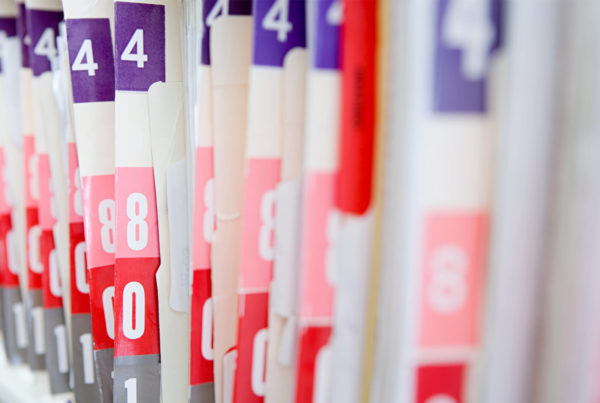In the Spring/Summer 1996 issue of Healing Magazine, KidsPeace announced the addition of an Acute Partial Hospitalization Program to its list of offered services. 20 years later, the program remains an integral part of the organization’s continuum of care.
Healing Magazine Issue #1, 1996 – “A therapeutic alternative to inpatient hospitalization”
As states continue to decrease the usage of residential treatment facilities, the use of Acute Partial Hospitalization Programs (APHPs) has increased along with other community programs. Patients admitted to the program suffer from moderate to severe mental health issues that impair their ability to function within the home, school, and community. The main purpose of APHPs remains unchanged; to prevent out-of-home placement, reduce recurring crises and keep children in the least restrictive environment.
As was the case twenty years ago, APHPs are divided into two developmental age groups: children ages 6 to 12 and adolescents ages 13 to 18. Classrooms receive six hours a day of treatment, five days per week, with clients returning to their homes in the evenings and on weekends. Additionally, individualized treatment plans are designed for each client by an interdisciplinary team.
Over the years, the content of these treatment plans has been altered to meet regulatory needs that focus on data and strengths. For example, a treatment plan twenty years ago could have one generic goal, but today goals must be extremely individualized and strength based, with measurable interventions. Data collection now plays an important role in showing how well interventions are working and objectives are being met.
Another big change is where therapy can take place. In the early years, it wasn’t uncommon for APHPs to take clients off grounds to movies or swimming as behavior modification rewards. For us at KidsPeace, the advent of managed care organizations (MCOs) in Pennsylvania fifteen years ago changed that practice. MCOs made it clear reimbursement of services would be limited to actual locations and addresses, and programs were not longer able to bill for any off-site activities, including transportation. Gone are the days when a classroom could go outside for an hour of flag football, followed by a movie at the local theater for clients who exhibited appropriate behaviors. Today, even recreational activities must have a clear treatment purpose and team-building component, reflect treatment goals and occur on the provider’s property to be considered therapeutic and eligible for reimbursement.
Healing Magazine Issue #1, 1996 – “Filling the gap in the continuum of care”
At KidsPeace, continuum of care remains an organizational commitment to fill gaps in care and allow patients the opportunity to continue treatment in a structured setting, which greatly reduces the incidence of recurrence or another hospitalization.
Our APHP program has evolved, again mostly from regulatory requirements, with a focus on what the six-hour program day looks like. When unveiled in 1996, the APHP was described as a six-hour program with each child receiving four to five sessions of intensive therapy, as well as one hour of academic tutoring. Now, due again to changes in reimbursement policies, treatment days are more structured, with six unique therapeutic sessions that utilize a psycho-educational approach, without specific time set aside for tutoring.
The daily progress note has also undergone several revisions – going from a simple DAP (date/assessment/plan) note that covered the entire day to a note broken into six hourly segments, each requiring a connection to the master treatment plan.
Healing Magazine Issue #1, 1996 – “Child and family friendly”
The intake process remains relatively unchanged with a focus on obtaining accurate clinical information from an interdisciplinary team consisting of a psychiatrist, the family/caregiver, master’s level clinician, nurse, and any outside agency. All services within community-based programs must be focused on supporting a client and family across the spectrum of home, school, and community, and every decision and recommendation is done with the hope that a child and their supports can function independently without the need for a more restrictive environment.
A typical intake session will last between one and two hours and include a biopsychosocial history and nursing assessment. As with many health organizations, the intake paperwork also includes numerous forms designed to inform the client and family of their rights and protected health information(PHI). In the past, one release was enough, but now rules dealing with specially protected health information and need-to-know considerations warrant additional and specific releases.
2016 operations
Initially started at the Broadway Campus in Fountain Hill, PA, KidsPeace’s APHP services are now also available at the Berks campus in Temple, PA. Combined, these two programs serve over 500 clients per year.
When admitted into an APHP a client will receive the following:
- Psychiatric evaluation and medication management from an on-site child psychiatrist
- Treatment plan that is strength based, measurable, and developed by a team
- Group, individual and family therapy from a master’s level therapist
- Six hours of structured therapy daily
- A strong family and aftercare component to help clients in reaching their goals.
Over the years, the acuity of an APHP client has increased for several reasons, from a push to limit residential treatment to general changes in society. Today, as MCOs dictate what is considered best practice, our programs get referrals for children that would have been more appropriately served in a residential setting in the past, because the consensus now is that treating children and adolescents in the community yields the best prognosis.
From 1996 to present day, Acute Partial Hospitalization Programs remain a fundamental level of care for children and adolescents suffering from moderate to severe mental health issues. Although several revisions have been made to the treatment plan and restrictions to where therapy can occur, the framework of the program remains relatively unchanged. APHPs have and will continue to have a place in mental health services as a way to prevent out-of-home placement, reduce crisis, and keep children in the least restrictive environment.






